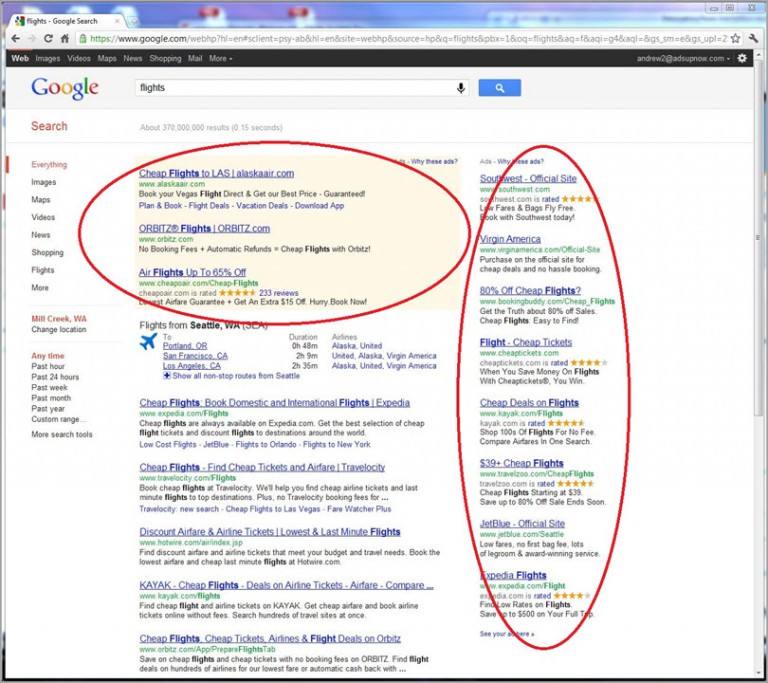Native advertising isn’t really a new trend. Ads that ‘mask’ themselves by matching the surrounding content, date back to the beginning of the 20th century.
However, their true rise on the Internet has started only in 2015 when The New York Times and some other major publications started to experiment with sponsored posts.
Today, we can see native ads everywhere and their variety, as well as the number, is growing by the day. This niche has created numerous profitable opportunities for publishers, ad developers, and brands, but regular consumers don’t seem very taken with it.
In fact, surveys indicate that native ads are often perceived as scams. It’s true that quite a few of them are deceptive, which only exacerbates the public’s negative reaction.
If you want to use native advertising effectively and/or avoid being scammed by unscrupulous messages, you need to understand what this advertising is, how it develops, and how to recognize it.
Native advertising types and trends
The reason why native advertising is on the rise today is that it’s incredibly effective. The profitability of traditional banner ads is dropping rapidly. An average Internet user is exposed to almost 2,000 banners monthly, and people have grown so tired of them that our subconscious has developed a phenomenon called ‘banner blindness’.
This behavior can be both conscious and subconscious, and it manifests in the user ignoring banner ads completely. Consumers of today also use specialized ad blocker apps to exclude the distractions more effectively. The combination of these factors has resulted in an all-time-low click-though rates for banner ads of 0.11%.
Instead of pushy banners, consumers are currently looking for trustworthy opinions, and that’s exactly what gives native ads an edge. These types of promotion messages resemble the exact kind of content that users look for when shopping. This attracts click-throughs and can generate hundreds of sales for clever brands that spread their messages through reputed publishers.
The most common types of native ads used on the Internet today are:
In-feed ads
In-feed ads appear as a genuine part of the page’s content. They are best used for social media where they fit seamlessly into the newsfeed.
Recommendation widgets
These are programs that offer suggestions to Internet users when they are viewing certain pages. They can be fairly effective if they offer a good match to the topic of the page.
Search ads
These ads appear at the top of search engine results and look similar to the regular result links. Google and Bing are the most popular providers of these units.
In-ads
These are contextual messages, like Google AdSense. They are genuine advertising units that appear on pages that offer content they are directly related to.
Promoted listings
These ads are mostly used by e-commerce websites, like eBay and Amazon. They pop up on top of the listing of recommended products or other ‘prime’ positions.
Trends in native advertising for 2016-2017
As native ads aim to emulate content, they follow the same trends in order to fit into the pages they are displayed on. This includes:
- Embracing visuals. A successful native ad unit should include an attractive graphic. Videos, in particular, are getting more popular. They must be short and catchy to keep the user’s interest.
- Going mobile. More people today use mobile devices to access the Internet than desktop computers. Therefore, any ad must be optimized for every type of mobile gadget.
- The majority of top-quality native ads today are manually implemented forms, like sponsored posts. The current trend is automating this type of advertising, which means using more in-feed and in-ad units and perfecting the software that determines their placement to achieve the maximum level of consumer response.
Native ad scams: What to look out for
The problem with native ads is that many consumers perceive them as scams because they don’t understand that the message/post is actually paid for by the brand. A person is looking for an expert opinion and putting their trust into the praise from a text published by a trustworthy source. When the realization that it is an ad hits, the buyer feels betrayed.
This reflects poorly not only on the brand but the publisher as well. The situation gets even worse when the ad itself is a scam aimed to sell a poor-quality product or steal the consumer’s private information.
The only technique used to prevent these problems today is marking native ads. However, due to the very nature of these units, the ‘markings’ are very subtle, so the users should study every post very carefully to catch them.
The most common labels used for native ads include:
- Sponsored (Post/By)
- Presented By
- Advertisement
The label is usually placed at the top of the ad unit.
The variety of scams that come in the form of native ads is huge. There are posts that attract visitors by ‘sensational’ messages of some celebrity’s tragic death or those that encourage you to click through to watch a video, and the page requires you to signup/buy/like something to actually do this.
An Internet user, who wants to avoid being scammed, needs to be careful and vigilant. You have to look out for native ad labels and stay away from deals that are too good (or news that is too shocking) to be true.
Using the power of native advertising effectively
Native advertising is a power to be reckoned with. It’s extremely efficient and can serve well to both the sellers and buyers. However, like many powerful tools, it’s often misused.
Brands and publishers that seek to attract buyers through native ads have to only post verified messages, as well as label them properly. This disclosure is necessary to nurture trust from the consumers and it will help establish a better relationship in the future.
From a regular internet user’s point of view, native ads are a potential threat. They can lead to anything from a golden opportunity to a computer virus. Therefore, it’s imperative to examine any ad or link before you click it. You should also look out for the signs of advertisement on the landing page itself. Never give out your personal information to a site that seems ‘shady’ in any way.
Follow these simple rules, and you should be able to avoid online scams that hide among reliable ads.
Guest Author: Melissa Burns graduated from the faculty of Journalism of Iowa State University. Nowadays is an entrepreneur and independent journalist. Her sphere of interests includes startups, information technologies and how these ones may be implemented in the sphere of education.
The post The Latest Trends in Native Advertising (and How to Avoid Scams) appeared first on Jeffbullas's Blog.



No comments:
Post a Comment